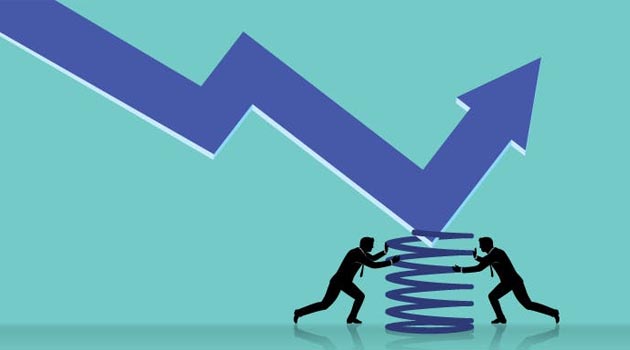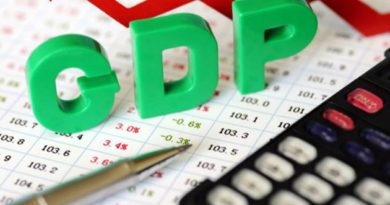Developing Block: Will It Bounce Back??
So the big questions loom large – which factors will shape growth over the coming years? What lies in store for the global – especially the developing block – economy? What are the top investment/expansion opportunities for business between now and 2020? How can a climate of innovation and entrepreneurship be developed?
The World Bank’s twice-a-year South Asia Economic Focus report projected steady increase in regional growth from 7 per cent in 2015 to 7.6 per cent by 2017 on grounds of strong consumption and increasing investment. The decline in oil prices has been reflected in the domestic prices of oil products to different extents across the region. The pass-through exceeded 50 per cent for most oil products in Pakistan, but was nil in Bangladesh, it said. The report reflects that households in the region stand to gain from lower oil prices, both directly through lower energy spending and indirectly through faster growth. But except for kerosene, richer households spend more in oil products, and stand to gain more. No doubt cheap oil gives the opportunity to rationalize energy prices, reducing the fiscal burden from subsidies and contributing to environmental sustainability.
Yes, the challenge will be to stay the course in the event of oil price hikes, something that may well happen in the medium- term. Very correctly it has been opined by the World Bank Vice President that savings from reduced subsidy bills could be used to address the crying needs of the region in terms of infrastructure, basic services and targeted support for the poor.
So far India is concerned the World Bank has predicted a GDP growth rate of 8 per cent for India by 2017 and said that a strong expansion in the country, coupled with favourable oil prices, would accelerate the economic growth in South Asia. In India, GDP growth is expected to accelerate to 7.5 per cent in fiscal year 2015/16. It could reach 8 per cent in FY 2017/18, on the back of significant acceleration of investment growth to 12 per cent during FY 2016-FY 2018, the bank said in its semi-annual report. The report noted India has already taken encouraging steps to decouple international oil prices from fiscal deficits and to introduce carbon taxation to address the negative externalities from the use of fossil fuels.
The economy is attempting to shift from consumption to investment-led growth, at a time when China is undergoing the opposite transition, it said. Given India’s weight in regional Gross Domestic Product, the projections reflect to large extent India’s expected growth acceleration, driven by business-oriented reforms and improved investor sentiment.
Together with favorable food prices, cheaper oil has contributed to a rapid deceleration of inflation. South Asia went from having the highest inflation rate among developing regions to having the lowest in barely one year. In March 2013, the Consumer Price Index (CPI) of the region had increased by 7.3 per cent year-on-year compared to 1.4 per cent in March 2015, the report said.
The reality is that whatever growth takes place in the developed block as well as in a few emerging economies the challenges galore! The states of ‘poverty in plenty’ loom large:
* About 925 million don’t have enough to eat – more than the population of the USA, Canada, and European Union;
* 98 per cent of world’s hungry live in developing countries – 65 per cent living only in seven countries: India, China, DRP Congo, Bangladesh, Indonesia, Pakistan and Ethiopia;
* Women make up a little over half of the world’s population but they account for 60 per cent of world’s hungry;
* A malnourished child dies every seven seconds;
* The cost of under-nutrition to national economic development is estimated at US $20-30 billion per annum.
The moot question thus is that: will poverty ever come to an end? ‘Human development is about much more than the rise or fall of national incomes. It is about creating an environment in which people can develop their full potential and lead productive, creative lives in accord with their needs and interests. People are the real wealth of nations. Development is thus about expanding the choices people have to lead lives that they value. And it is thus about much more than economic growth, which is only a means—if a very important one—of enlarging people’s choices’— rightly opined in What is Human Development?, Human Development Reports, United Nations Development Program.
While poverty alleviation is important, so too is tackling inequality. Inequality is often discussed in the context of relative poverty, as opposed to absolute poverty.
Thus, the failure to fight hunger may turn out to be a holocaust. If allowed to go on unabated, the “have-nots” might swell the society to make hell the lives of the ‘haves’ – a message that abounds history. Hunger hurts the whole society, not the hungry alone. The sooner we realize it, the better it is.
Thus, the poor must have significant participation in the process of economic growth. Massive exploration of mining may increase growth at the cost of widening inequality in the society but massive growth in agriculture may result in growth with fair distribution. Agricultural growth, labour-intensive manufacturing, widely distributed non-discriminatory quality education, reduction of digital disparity etc, could meet both ends. There is no pleasure in plenty unless we can reduce the pain of the poor in the society.
And then what about protecting this beautiful world – no short cut solution.
Dark clouds still loom large! The global output of heat-trapping carbon dioxide jumped by the biggest amount on record, the US department of energy has calculated, in a sign of how weak the world’s efforts have been at slowing man-made global warming. The new figures for 2010 mean that levels of greenhouse gases are higher than the worst case scenario outlined by climate experts just four years ago.
So, what is to be done at this juncture, presuming that the situation is not going to change much during rest of the year??
The straight answer is: simultaneously going for urban and rural development projects. The future of the developing world largely hinges on industrialization. There is, of course, no short cut process on this score. Whatever steps are taken that must be local rooted – regional peculiarities. Actually, over the years a lot of works encircle poverty reduction in the rural context. Should we assume that minimum poverty is there on the urban scenario? A great no. in the absence of urban development things will simply worsen. That is the reason why the need is there for emphasizing a simultaneous effort. The rural urban resource flow has become so crucial in the reversible sense, that in the absence of one wheel the cycle will remain just a junk one!! Simultaneously tackling the farm and non-farm sectors could just change the rural scenario. Of course, taking full use of technology.
It is crystal clear that the metropolitan planning process – a means to bring people, information, and ideas together to inform regional development decisions – plays the dominant role. This very process encompasses not only considerations such as mobility, accessibility, and connectivity, but also economic vitality, the environment, social equity, safety, security, and financial constraints.
The keystone of the process is the collaborative participation of development agencies/organizations, elected officials, and the general public.
On this score metropolitan planning organizations exists as the forum for the planning process. Within that forum, a region´s short- and long-term needs are assessed, a vision for the future is developed, and funding for projects and programs to support that vision is allocated. This, in turn, can be described as the 3C process, because it requires that the process be continuing, cooperative, and comprehensive: (a) continuing: Planning must be maintained as an ongoing activity and should address both short-term needs and the long-term vision for the region; (b) cooperative: process must involve a wide variety of interested parties through a public-participation process and (c) comprehensive: process must cover all functional areas consistent with regional and local land-use and economic-development plans.
Specifically speaking: implementing a socio-economic development strategy for , say, 10 years to come, call for enveloping three wings – infrastructure and human resources, economic restructuring and sustainable development.
Again, inequality is not just bad for social justice, it is also bad for economic efficiency— Growth with equity is good for the poor, as was pertinently observed by Oxfam, dated back June 2000
About the Author
Dr Mukhopadhyay, a noted Management Economist and an International Commentator on Business and Economic Affairs, attached to the West Bengal State University, can be reached at [email protected]


